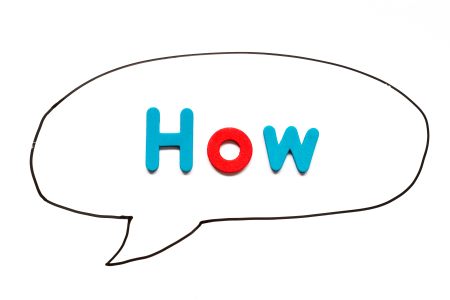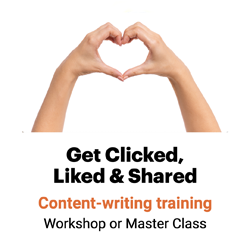Tipsheets get read, shared, used and acted upon
What makes people share information?

News they can use to live their lives better, according to Chadwick Martin Bailey research. Here are the Top 3 reasons people share:
- Because I find it interesting/entertaining: 72%
- Because I think it will be helpful to recipients: 58%
- To get a laugh: 58%
Want your blog posts and status updates to travel the world instead of staying home on the couch? Make them helpful to your social media network.
Writers take classes on how to show, don’t tell; how to use storytelling to make corporate messages as interesting as fiction writing; how to write in the CEO’s voice and from her point of view.
But how about a writing class on how to deliver news readers can use to live their lives better? How-to stories and tipsheets are effective, because:
1. How-to stories get read.
Making a publication “easy to read” is the No. 1 way to increase readership, according to Impact, an extensive study by The Readership Institute.
And one of the handful of ways to accomplish that is to include more “go and do” information. “Go and do” information is the nitty-gritty details that help readers take action on a story:
- Phone numbers
- Times
- Dates
- Addresses
- URLs
- Contact names
- Maps
These elements greatly increase the value and usefulness of the story to readers.
Impact found that if newspapers (and, by extension, other communications) become more “relaxing to read” and make it easier “to find what I’m looking for,” people will:
- Spend more time reading the publication
- Read it more completely
- Read it more often
Communicators can make messages more relaxing and easy by:
- Including more “go and do” — or how-to — information
- Offering more feature-style story structure
- Promoting content more effectively within the publication
2. How-to stories get shared.
What kind of information do people retweet? News and how-tos (PDF), according to research by Dan Zarrella, viral marketing scientist for HubSpot:
- News: 78%
- How-to information: 58%
- Entertainment: 53%
- Opinion: 50%
- Products: 45%
- Small talk: 12%
Please note: News is what CNN and the BBC report. It’s not your urgent updates about your Widget 2.6.3.1.
Don’t worry, though. That leaves how-to information as our best bet for content.
Want more retweets? Write blog posts packed with tips, techniques and step-by-step how-tos..
3. How-to stories get followed.
Informers are the 20% of Twitter users who tweet information, ideas and insights, new studies, quotes, resources and insights. “Meformers” are the 80% who tweet urgent updates about themselves.
Not surprisingly, informers have nearly three times as many followers as meformers, according to a study by Rutgers University professors Mor Naaman and Jeffrey Boase.
4. How-to stories get picked up.
Why how-to stories?
- Journalists and bloggers love tipsheets because they’re ready-made, how-to stories, sidebars and USA Today-style tips boxes. Your fire-safety tips post, for example, might accompany a news piece about a big apartment fire.
- Social media channels run on “Top 10 ways to …” listicles.
- Customers and clients will read the tipsheet you write today for years to come, making tip sheets the ultimate evergreen with an almost limitless shelf life.
5. How-to stories move readers to act.
The best communicators want to move their readers to action, not just to inform them. In one study, the addition of a simple element — a map — increased action by 28%.
In the study, social psychologist Howard Levanthal wanted to persuade a group of Yale seniors to get a tetanus shot. He gave each senior a booklet that:
- Detailed the dangers of tetanus
- Explained the importance of inoculations
- Reported that students could get free shots at the campus health center
After reading the booklets, the students understood the dangers of tetanus and the importance of the shots and said they were likely to get inoculated.
But only 3% actually got the shot.
In a later study, Levanthal added:
- A map of the campus with the health building circled
- A list of times the shots were available
The result: 28% of seniors actually got the shot.
“Go and do” information — like maps, hours of operation and contact information — increase readership. Levanthal’s study suggests that they can also increase action.
Why?
“The students needed to know how to fit the tetanus stuff into their lives,” writes Malcolm Gladwell in The Tipping Point.
“The addition of the map and the times when the shots were available shifted the booklet from an abstract lesson in medical risk — a lesson no different from the countless other academic lessons they had received over their academic career — to a practical and personal piece of medical advice. And once the advice became practical and personal, it became memorable.”
How-to stories work.
How do you write messages that grab attention, get read, shared and acted upon? One of the best ways to write a good story is to focus on writing tips and tricks and techniques. So when looking for your next story idea, look for how-to stories.
Why not write a how-to story today?

Leave a Reply